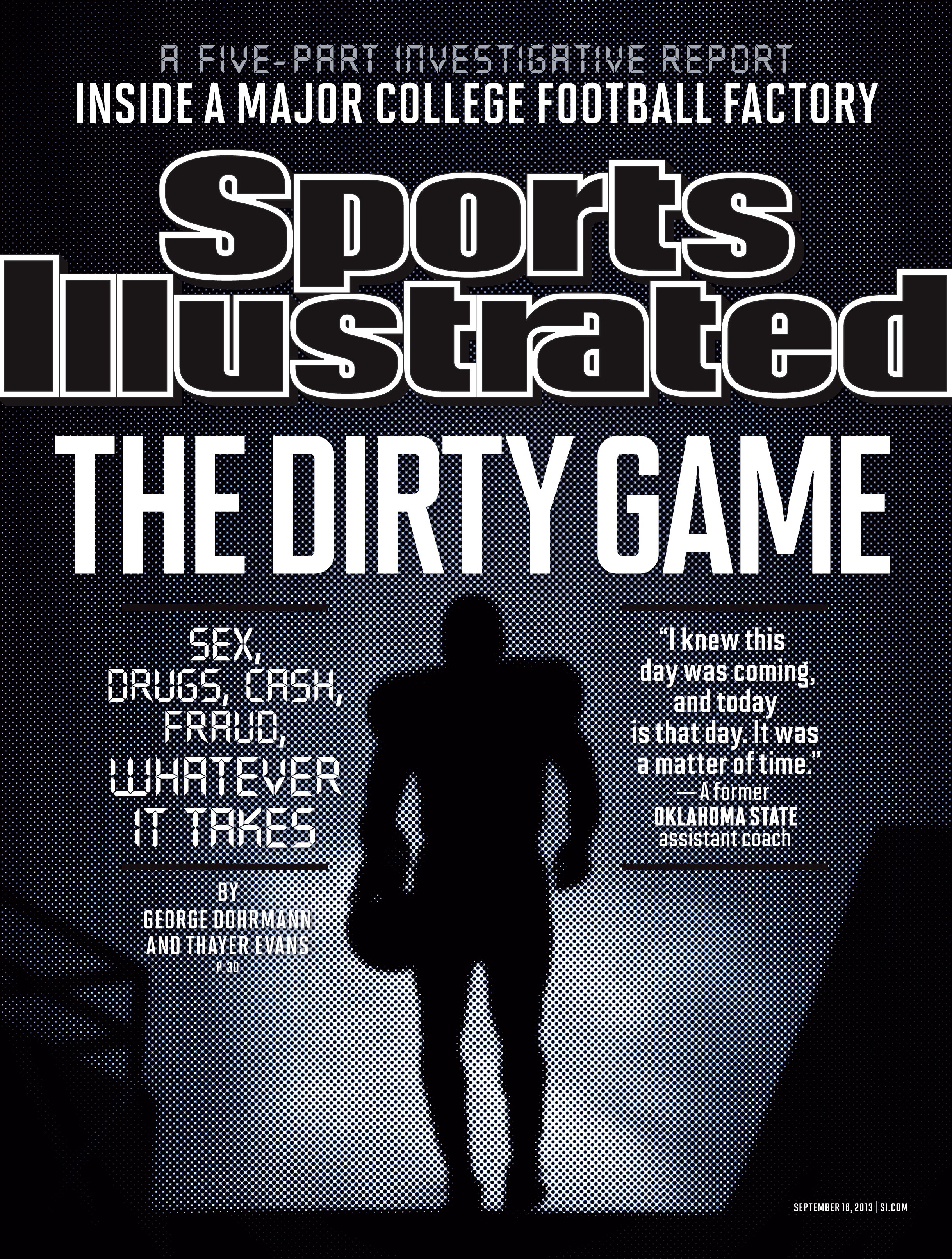You could see the proverbial spit flying last week, couldn’t you? With the release of a five part series by Sports Illustrated on the misdeeds of the Oklahoma State football program. Money to players! Academic fraud! Sex!! Interested parties from coast to coast weighed in on a) just how ugly major college sports indeed have become or b) just how clearly SI had identified the sun as rising in the east. Shame on the seedy boosters, coaches, and players taking advantage of dying amateurism in college football. And the message is clear: shame on all of us who watch, cheer, and pay to be part of these scandalous operations.

I’ve got a few opinions on the topic, to say the least, having covered University of Memphis football and basketball for more than a decade now. My feelings run from one extreme to the other, a journalist’s objectivity often compromised by the passion that leads so many sports fans — and former athletes — to the field of sports journalism.
College football and college basketball are tarnished by corruption (sun sets in west). The very best players in either money-making sport attract the attention of “supporters” who recognize the chance to share in the profit-turning exploits of the next Reggie Bush or Derrick Rose. And the likes of Bush and Rose enroll as “student-athletes” in college with no more interest in a freshman-lit lecture than that of the booster president who picked them up at the airport. How can any of us be party to this dirty game of talent bartering?
It’s a matter of perspective. Bush and Rose remain exceptions, a select minority if you will. So do the Oklahoma State players mentioned in SI’s reporting. Call this naïve if you like. To deny that most college football players remain within the blurred boundaries of NCAA regulations is not just cynical … it’s blind.
There are currently 123 FBS football programs, each with a scholarship limit of 85 players. That gives us 10,455 young men playing the highest level of “amateur” football in America. How many of these players attract the kind of scandalous recruiting highlighted at Oklahoma State? For simplicity’s sake, let’s say every All-America — first, second, or third team — gets a few grand, maybe a car, before choosing his team colors. That would be 75 players each year: .007 percent of all FBS programs. Seven out of 1,000.
Seven players gaming a system out of every 1,000 is too many. One out of a thousand is too many. But let’s not tear down the walls of college sports for thousands of legitimate student-athletes because of the seedy baggage a tiny minority bring to campus every fall. Since 2000, scores of Memphis Tiger football players have suited up and exactly 13 of them have played as many as five years in the NFL. Every Tiger player who left campus with a degree — his studies paid for with a football scholarship — has better career prospects today than he would have minus that degree. Somewhere in that equation is a profoundly positive element to college football.
There’s only one way to fix this mess: establish a partnership between the NFL and college football (and between the NBA and college hoops). Replace the NCAA with the two professional leagues that are already utilizing major college programs as farm teams. Allow the NFL to draft players fresh out of high school. If the player is good enough to play on Sundays at age 18, let him. If he’s not ready, he can be assigned to a college program … where he’ll major in football (paid by the team that drafted him), and have the option to take classes should he be wise enough to consider the tiny chance he’ll be playing football professionally at age 30. Which college programs are assigned to which NFL teams? How about a rotating system, one where a pro team would have, say, four programs in its “farm system” for a five-year period.
An open partnership with the NFL won’t fill an 85-man college roster. There would still be room for college programs to recruit legitimate student-athletes, those ready and able to play football on the college level, but with no illusions about their market value in the sport. Yes, you’ll have players being paid on the same field with scholarship amateurs. So be it. Market economics. What you’ll have, finally, is honesty in college sports. Players talented enough to earn money at their game can do so openly. And others — the vast majority — can play the game they love while capturing the greatest asset for a stable adult life: a college education.